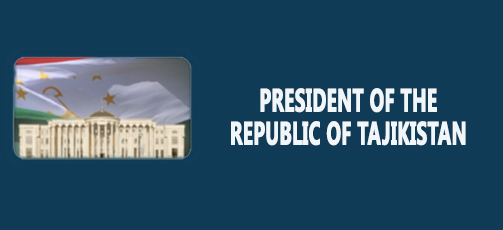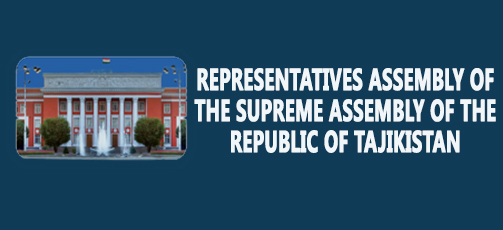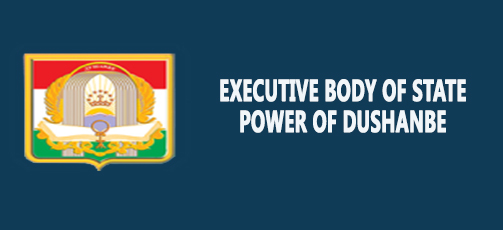Speech at the Opening Ceremony of International Exhibition of the Association of Painters for Peace “Pearls of Silk Road”
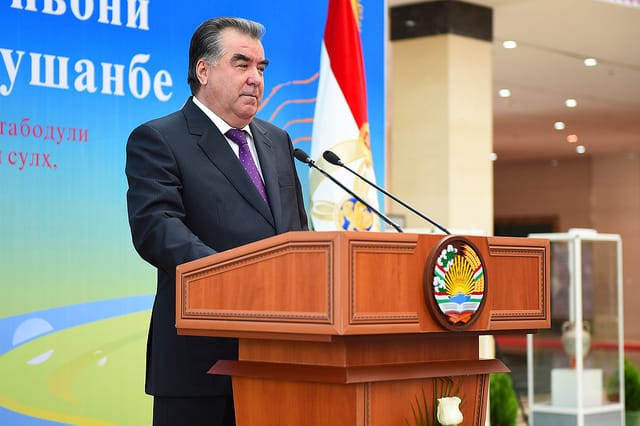
Distinguished Guests!
Honorable Friends!
Culture is the most important moral value for human-being that promotes improvement of the latter’s aesthetics. The culture improves interpersonal dealings and strengthens peace and stability in society. It is also the expression and reflection of people’s dreams and wishes, traditions and customs and the best impression of people in a specific form and way.
Culture and the dialogue of civilizations have been playing growingly important role at the current situation and became a tool for regulation of interpersonal relations, expression of their objectives and instrument to achieve human constructive goals.
The culture can help the human-being avoid severe risks, empower it with constructive power and release from a very burning state of thinking of hatred and violence and guide it to deserve respect of others and strengthen peace and stability in the globe. This is the very reason, we focus on continuous development of culture in our policy and always support it.
After attaining independence, the Government of Tajikistan declared the culture as the existence of our nation and has been undertaking necessary measures for its development as the factor of improvement of society’s moral values and thinking. During 25 years we have ensured favorable environment for development of all aspects of culture in the country and established special educational and creation institutions. Annually hundreds of young talents get admitted to these institutions and make efforts not only to gain knowledge and specialty, but also to promote an important ideology of culture.
At present all varieties of culture, including painting have been developing in our country and the products of Tajik painters are popular worldwide. Thanks to their skills and works they gained special popularity by participating in dozens of exhibitions, cultural events, festivals and competitions.
By establishing State Institute of Painting and Design as well as the Academy of Painters in the country we established enabling environment for the development of painting and sculpture and the graduates of institutions and cultural educational facilities have been making significant achievements.
There is a wide spectrum of opportunities in place for painters and sculptors, they participate in decoration of various facilities and create wonderful works. The painters have a good opportunity to arrange exhibitions at the National Museum and the National Library as well as Centers for promotion of works of painters and sculptors in the administrative centres of provinces and towns, where the country’s residents and guests get familiar with their works and broaden their outlook on the beauty of human world and the nature.
It is gratifying that in continuation of the 25th Anniversary of our State Independence, the International Exhibition of Painters for Peace entitled “Pearls of Silk Road” began today in the capital city of our country — Dushanbe, which opens a new phase for the development of cultural cooperation, particularly painting arts. I would like to avail myself of this opportunity to extend my sincere congratulations to our distinguished guests and all participants on the occasion of the commencement of this exhibition.
Distinguished participants!
Among the artists, painters play a particular role, since they also serve as ambassadors of peace and friendship alongside with promoting culture. The most important global issues, including those of peace and friendship are reflected in their works. These issues are of great importance in the majority of the contemporary painters’ works regardless of nationality and religion because they express the present and future of human-being through different colours and the issue of peace and friendship between the peoples of the globe are at the centre of delicate pieces of art.
These artists call people for good deal, charity and patriotism in their work and cover the important topics of the time being, including hatred of war, pluralism, and forgiveness to mankind, peace and stability as well friendship and cooperation. The core of painters’ works is related to the philosophy of coexistence and they reflect the current challenges of the society, beauty of the nature and associated to this issue environmental protection, which for sure are of high educational value.
The painters imagine the black colour as the circle of darkness and they mostly apply green, red, white and violet colours against the black one, which reflect peace, beauty, light, happiness, love, honesty and humanity. Selection of colours leads to conclusion that painters, like other groups of intelligentsia, are promoters of peace and stability and full-fledged unity between the people and the world.
I believe that the talented and popular painters from more than 30 countries of the world, including from Europe and Asia, exhibit these issues and they focus on peace and stability, future destiny of mankind and its constructive role in achieving peaceful life and overcoming the global threats.
Ladies and Gentlemen!
Now I would like to briefly outline my view on the importance of the Great Silk Road in the current context. Since the period of emergence of this highway, Tajiks, like people of China, have made efforts for strengthening and development of this Grand Road, even Sogdian language once served as the language of communication between the peoples and led to expansion of the geography of this great road from China up to the shores of Mediterranean Sea.
Later, particularly thanks to the impact of this great road, cultural ties also emerged and transferred to one of the factors of development of culture, particularly music, dance, painting, architecture and so on. It was this unity of cultures that made the interpersonal links stronger and expanded cooperation in various areas.
Fortunately, the 21st century has become the new age of revival of the Great Silk Road and thanks to this historical road new types of dialogue between the heads of country are in place at present, and trade, economic and cultural relations have been expanding currently. The role of research and cultural ties are of particular importance within this cooperation, which became the tool for promotion of cultural exchange. We have witnessed several high level cultural events and arranged meetings, festivals, competitions and round tables on the importance of culture in development of bilateral and multilateral relations, and this event is a vivid example of this statement.
I believe that this cultural event will become a cultural dialogue and will promote strengthening of friendship and cooperation between the inhabitants of the globe since the latter respects the diversity of cultures and supports it. We also acknowledge the culture and the existence of nation and highly respect it and support its further development.
Tajik Painting Arts, which goes back to many centuries, possesses unique samples of historical heritage, which are of the same high value with the works of the Ancient Greece.
The first stone pieces of art were discovered in Gorno Badakhshan Autonomous Province at the altitude of 4100 metres above the sea level. They belong to so called Marakansai culture, which is the culture of the highest mountainous areas of the Stone Age in the world.
The art of book decoration and miniature of the Tajik painters mostly developed in the Middle Age, and they are usually the core of the works of our painters. The miniature was comprised of battle fields, episodes of parties and clubs of songs and music, hunting, landscape, ceremonies of reception, portraits of great personalities and so on.
At the late 14th century and early 15th century the Herat School of Miniature was established and Kamoliddin Bahzod is the greatest representative of this School. Behzod was well known by the nickname of “Monii Soni” in the East and “The Rafael of East” in the West, and the artists of his time called him the “Ruler of Painters”, “The Only One”, and “The Unique Personality” of that time. Realism of the Behzod’s works is mostly reflected in the paintings illustrating the real life of people. Kamoliddinin Behzod also painted some ethnographic pictures, which are of high arts, aesthetic and historical value. Portrait painting is also of particular importance in the works of Behzod. Particularly the portraits of Abdurahmon Jomi, Alisher Navoi, Abdulloh Hotifi, Sulton Ali Hattod, Muhammad and other celebrities, which reached our times, are among his works.
Familiarization of the Tajik artists with the western art traditions started at the end of the 19th and beginning of the 20th century. Painting and its genres, including portrait, still life, as well as sculpturing and decorative arts expanded gradually. Particularly a new art phenomena called the Contemporary Arts of Tajikistan became popular at that time. It emerged and developed in the process of the mutual influence between the eastern and European cultural traditions, within the system of diverse opinions on the world and modernization of all branches of painting arts. The principles of Contemporary Arts of Tajikistan were established started at the middle of the 20th century. Contemporary painting, which reflects the history of Tajik people and its achievements and success in different colours, advanced and flourished over the last years.
We can observe this peculiarity in the works of several generations of painters. They paid attention to the past and selected the historical events as important topics for their works and by nurturing them artistically, they familiarize the spectators with the life and situation of that time.
Alongside with this, they also well painted the then current and future issues associated with the artistic period and area, and made a significant achievement in selection of topics, colours, landscape as well as materials and personalities, which is proved by the exhibition of painters’ work today.
I have to emphasize that works of Tajik painters are of specific peculiarity, which reflect the traditional technique based on seven colours and delicate uniqueness. It looks like our country is tailored for painting. The beauty of its mountains, gorgeous waterfalls and valleys and other unique landscapes provide enormous opportunity of diversity to painters. I believe that the painters avail this opportunity and will further benefit from the colourful nature of our country and reflect various corners of our country in their works.
It is my firm belief that the fans of painting arts having seen the creations of painters from different countries once again get impressed by the delicacy of colours and the secrets of internal world as well as the core of philosophy of painters, understand the essence of diversity of cultures, and reflect the colourful and beautiful world of mankind in a more pleasant and realistic was.
At the conclusion, I would like to extend my gratitude to initiators and partners in arrangement of this cultural event, particularly International Union of Painters for Peace, Cultural Exchange Centre of Tourism for Peace, and the Silk Road Peace Award Foundation.
I would also like to wish good luck and greater achievements to painters who exhibit their works in the International Exhibition of Painters for Peace and welcome them to hospitable Tajikistan.
I wish good luck to the Forum!










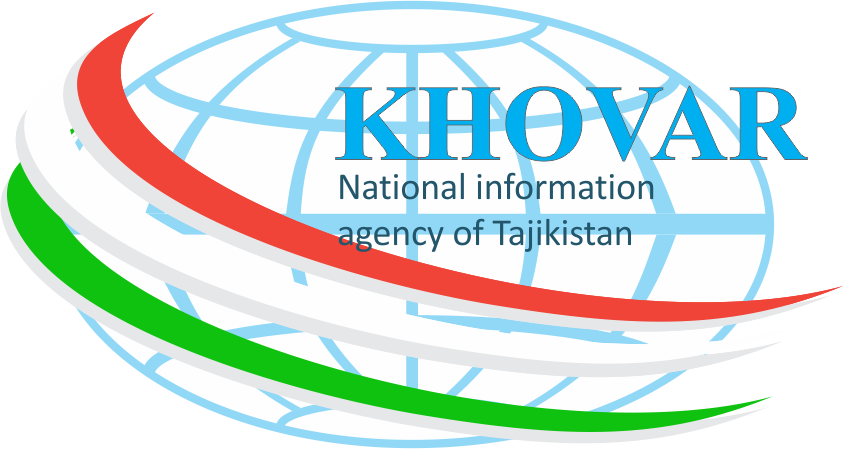
 Statement of the Press Center of the Border Troops of the State Committee for National Security of the Republic of Tajikistan
Statement of the Press Center of the Border Troops of the State Committee for National Security of the Republic of Tajikistan Tajikistan will host International Symposium dedicated to Ancient Khutal
Tajikistan will host International Symposium dedicated to Ancient Khutal Dushanbe to host SCO Youth Forum in 2026
Dushanbe to host SCO Youth Forum in 2026 Biogas in Rural Areas: A Real Solution or a Temporary Experiment in Tajikistan?
Biogas in Rural Areas: A Real Solution or a Temporary Experiment in Tajikistan? Tajikistan strengthens cooperation with the United States in the field of digitalization
Tajikistan strengthens cooperation with the United States in the field of digitalization Tajikistan, U.S. begin drafting agreement on air communications
Tajikistan, U.S. begin drafting agreement on air communications Tajikistan initiates synergy between the CIS, CSTO, and SCO approaches in the field of deradicalization
Tajikistan initiates synergy between the CIS, CSTO, and SCO approaches in the field of deradicalization Tajikistan to build first hydropower green data center in GBAO’s Darvoz district
Tajikistan to build first hydropower green data center in GBAO’s Darvoz district Tajikistan and IsDB discuss cooperation and support for Rogun hydroelectric power station
Tajikistan and IsDB discuss cooperation and support for Rogun hydroelectric power station Panjakent officially recognized as City of Suzani Embroidery
Panjakent officially recognized as City of Suzani Embroidery Dushanbe hosts meeting of standing committee on defense and security of CSTO PA
Dushanbe hosts meeting of standing committee on defense and security of CSTO PA









